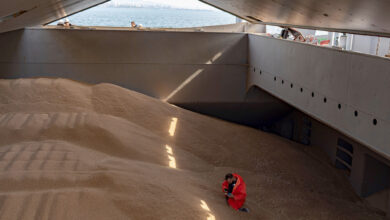Hugo Chavez will enter a waxy afterlife when he is embalmed and put on permanent display in Venezuela, giving his backers a powerful propaganda tool to ensure his populist movement survives his death.
Preserving Chavez's body and fixing his face in an eternally serene gaze will fill a political void, analysts said, as it did for earlier revolutionaries such as Russia's Joseph Stalin, Vietnam's Ho Chin Minh or China's Mao Zedong.
It is a way of ensuring "Chavismo" survives Chavez.
Importantly, it was Chavez's political heir, Vice President Nicolas Maduro, who announced the decision to embalm his leader, "like Ho Chin Minh, Lenin and Mao."
The body of the Venezuelan anti-American firebrand, who died Tuesday at the age of 58 after a losing struggle against cancer, will be preserved and kept in a glass casket to be seen "for eternity," he said.
"Chavismo wants to confer on him a kind of immortality," said Juan Carlos Trivino, political science researcher at the Pompeu Fabra University in Barcelona.
Chavez's charismatic presence filled the lives of Venezuelans "for better or for worse," Trivino said.
"Venezuelans are losing a very powerful presence with his departure. The idea of embalming allows you to conserve that material and tangible presence," he added.
Chavez's body, which lay in state before his funeral Friday, will be taken to the "Mountain Barracks," which is being converted into a Museum of the Revolution, Maduro said.
But there is popular pressure for Chavez one day to lie alongside Latin American independence hero Simon Bolivar, who inspired his revolutionary, socialist movement that promised to help the poor by redistributing the country's huge oil wealth.
Authoritarian regimes typically use personality cults to maintain legitimacy, and embalming allows them to prolong the cult beyond death, said Joseph Cheng, a professor of politics at Hong Kong's City University.
"With a personality cult, you can create a lot of myths to strengthen people's support for the existing regime and the existing policies of the regime," Cheng said. "It helps to mystify politics to the advantage of the regime."
In North Korea, for example, the body of Kim Il-Sung, the country's "Great Leader," remains under a spotlight in an enormous glass-enclosed tomb at his presidential palace on the outskirts of the capital, Pyongyang.
The embalming process itself is not simple, said Philippe Charlier, French forensic scientist, anthropologist and historian.
"The body is pretty much completely preserved with an injection of formalin, disinfectant and dehydration products, and the body is then covered in wax," Charlier said.
"Then you can preserve the physical integrity of the individual, but you also have a face that is peaceful, beautiful and fit for viewing," he said.
There were strong suspicions, though, that the preserved bodies of some Russian communist leaders were regularly switched to be restored and freshened up, the scientist added.
Russia boasts specialists on embalming who have worked on preserving the body of Lenin in the last decades but also helped embalm leaders from the former Communist bloc who died in Soviet times.
A Russian specialist who helped preserved Lenin’s body in Soviet times told the ITAR TASS news agency Friday that "the Russian technologies for embalmment are absolutely first rate."
"This procedure has existed for many years and has been worked out in detail," said the specialist, who was not named.
Lenin’s body was embalmed after his death in 1924 and placed in the purpose-built mausoleum on Red Square where it still resides to this day, although the mausoleum is closed for restoration.
His successor Stalin was also embalmed when he died on 5 March 1953 — ironically, the same date as Chavez — although his body was later buried at the Kremlin walls when the Soviet Union recognized the extent of his crimes.
As well as Soviet bloc leaders, Russian specialists embalmed the likes of Bulgarian Communist leader Georgi Dimitrov in 1949, Ho Chi Minh in 1969 and North Korean leader Kim, who died in 1994.




